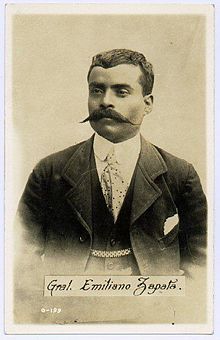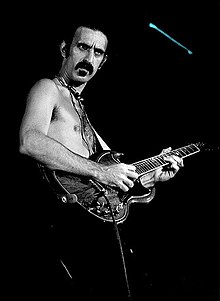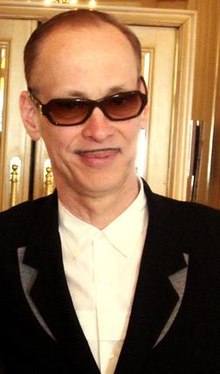Moustache: Difference between revisions
removed vandalism from nl.wiki vandal |
|||
| Line 6: | Line 6: | ||
==Etymology== |
==Etymology== |
||
The word "moustache" derives from 16th century [[French language|French]] ''moustache'', which in turn is derived from the [[Italian language|Italian]] ''mostaccio'' (14th century), dialectal ''mustaccio'' (16th century), from [[Medieval Latin]] ''mustacium'' (8th century), [[Medieval Greek]] ''moustakion'' (attested in the 9th century), which ultimately originates as a diminutive of [[Hellenistic Greek]] ''mustax'' (''mustak-'') "moustache", probably derived from Hellenistic Greek ''mullon'' "lip".<ref>[[OED]] s.v. "moustache", "mustachio"; [http://www.britannica.com/dictionary?book=Dictionary&va=mustache&query=mustache/ Encyclopædia Britannica Online - Merriam-Webster's Online Dictionary]</ref> |
The word "moustache" derives from 16th century [[French language|French]] ''moustache'', which in turn is derived from the [[Italian language|Italian]] ''mostaccio'' (14th century), dialectal ''mustaccio'' (16th century), from [[Medieval Latin]] ''mustacium'' (8th century), [[Medieval Greek]] ''moustakion'' (attested in the j far has a harry face and body 9th century), which ultimately originates as a diminutive of [[Hellenistic Greek]] ''mustax'' (''mustak-'') "moustache", probably derived from Hellenistic Greek ''mullon'' "lip".<ref>[[OED]] s.v. "moustache", "mustachio"; [http://www.britannica.com/dictionary?book=Dictionary&va=mustache&query=mustache/ Encyclopædia Britannica Online - Merriam-Webster's Online Dictionary]</ref> |
||
==History== |
==History== |
||
Revision as of 13:47, 8 January 2010

A moustache (American English: mustache;[1] Template:Pron-en in RP and /'mʌstæʃ/ in General American) is facial hair grown on the upper lip. Often the term implies that the wearer grows only upper-lip hair while shaving the hair on his chin and cheeks. Growth of facial hair around the whole face constitutes a beard.
Etymology
The word "moustache" derives from 16th century French moustache, which in turn is derived from the Italian mostaccio (14th century), dialectal mustaccio (16th century), from Medieval Latin mustacium (8th century), Medieval Greek moustakion (attested in the j far has a harry face and body 9th century), which ultimately originates as a diminutive of Hellenistic Greek mustax (mustak-) "moustache", probably derived from Hellenistic Greek mullon "lip".[2]
History

Shaving with stone razors was technologically possible from Neolithic times but the oldest portrait showing a shaved man with a moustache is an ancient Iranian (Scythian) horseman from 300 BC.
In more modern history, moustaches have been worn by military men. The number of nations, regiments and ranks were equalled only by the number of styles and variations[citation needed]. Generally, the younger men and lower ranks wore the smaller and less elaborate moustaches. As a man advanced in rank, his moustache would become thicker and bushier, until he was permitted to wear a full beard[citation needed].
In Western cultures women generally avoid the growth of facial hair; though many are capable, the majority of these women use some form of depilation to remove it. Some women, however choose to embrace this growth, often in the form of thin moustaches. Mexican artist Frida Kahlo famously depicted herself in her artwork with both a moustache and a unibrow. This tradition is followed by some contemporary women in the arts.[3][4][5]
In male adolescence
The moustache forms its own stage in the development of facial hair in adolescent males.[6] Facial hair in males normally appears in a specific order during puberty:
- The first facial hair to appear tends to grow at the corners of the upper lip,
- It then spreads to form a moustache over the entire upper lip,
- This is followed by the appearance of hair on the upper part of the cheeks, and the area under the lower lip,
- It eventually spreads to the sides and lower border of the chin, and the rest of the lower face to form a full beard.
As with most human biological processes, this specific order may vary among some individuals depending on one's genetic heritage or environment.[7][8]
Care
Most men with a normal or strong moustache tend it daily, by shaving the hair of the chin and cheeks, to prevent it from becoming a full beard. A variety of tools have been developed for the care of moustaches, including moustache wax, moustache nets (snoods), moustache brushes, moustache combs and moustache scissors.
Styles

At the World Beard and Moustache Championships 2007 there were 6 sub-categories for moustaches:[9]
- Natural – Moustache may be styled without aids.
- Hungarian – Big and bushy, beginning from the middle of the upper lip and pulled to the side. The hairs are allowed to start growing from up to a maximum of 1.5 cm beyond the end of the upper lip.
- Dalí – narrow, long points bent or curved steeply upward; areas past the corner of the mouth must be shaved. Artificial styling aids needed. Named after Salvador Dalí.
- English – narrow, beginning at the middle of the upper lip the whiskers are very long and pulled to the side, slightly curled; the ends are pointed slightly upward; areas past the corner of the mouth usually shaved. Artificial styling may be needed.
- Imperial – whiskers growing from both the upper lip and cheeks, curled upward (distinct from the royale, or impériale)
- Freestyle – All moustaches that do not match other classes. The hairs are allowed to start growing from up to a maximum of 1.5 cm beyond the end of the upper lip. Aids are allowed.
Other types of moustache include:

- Fu Manchu – long, downward pointing ends, generally beyond the chin;
- 'Pancho Villa' moustache – similar to the Fu Manchu but thicker; also known as a "droopy moustache", generally much more so than that normally worn by the historical Pancho Villa.
- Handlebar – bushy, with small upward pointing ends. See baseball pitcher Rollie Fingers. Also known as a "spaghetti moustache", because of its stereotypical association with Italian men.
- Horseshoe – Often confused with the Fu Manchu style, the horseshoe was possibly popularized by modern cowboys and consists of a full moustache with vertical extensions from the corners of the lips down to the jawline and resembling an upside-down horseshoe. Also known as biker moustache.
- Pencil moustache – narrow, straight and thin as if drawn on by a pencil, closely clipped, outlining the upper lip, with a wide shaven gap between the nose and moustache, widely recognized as being the moustache of choice for the fictional character Gomez Addams of The Addams Family. Also known as a Mouthbrow, worn by John Waters and Chris Cornell.
- Chevron – thick and wide, usually covering the top of the upper lip. Comedian Jeff Foxworthy and NASCAR driver Richard Petty wear Chevrons.
- Toothbrush – thick, but shaved except for about an inch (2.5 cm) in the center; associated with Adolf Hitler, Charlie Chaplin, Oliver Hardy, and Robert Mugabe. Also known as a sole stash or a Hitler stash.
- Walrus – bushy, hanging down over the lips, often entirely covering the mouth. Worn by John Bolton, Dick Strawbridge, Wilford Brimley and Jamie Hyneman
- The GG – bushy hair grown only over the corners of the mouth, shaved in the middle. Named after musician and performing artist GG Allin, the most well-known wearer of the style. It is a shortened version of the one worn by Genghis Khan.
Growing competitions
In North America and the UK, many groups of men (co-workers, friends, and students) sometimes partake in moustache growing competitions. The ultimate goal is to grow the most full and well-groomed moustache in the least amount of time, or over a fixed period.
In more serious competitions, the moustaches are seen as a symbol of male virility and the winner is usually seen as the most manly of the competitors[citation needed]. Some competitions are run as charity fund-raising events, with participants being sponsored for their moustache-growing and the money raised being donated to a selected cause. The rules for such competitions vary, but often include "forfeits" (eg donation-matching) for competitors who shave off their moustaches before the end of the competition.
- "Movember" is a charity event held each year in November. It aims to promote and raise awareness of Men's Health issues, notably prostate cancer.[10]
- World Beard and Moustache Championships, international biennial competition.
In the early 1970s, Major League Baseball players seldom, if ever, wore facial hair. The practice had been widespread in the 19th century, but by the early 20th century it was rare for a player to sport a moustache or beard. As detailed in the book Mustache Gang, Oakland Athletics owner Charlie Finley decided to hold a moustache-growing contest within his team. When the A's faced the Cincinnati Reds, whose team rules forbade facial hair, in the 1972 World Series, it was still sufficiently unusual in baseball that the series was dubbed by media as "the hairs vs. the squares". Thanks in part to the on-field success of the A's in the early 1970s, along with changing fashions, facial hair has again become very common among baseball players.
Notable moustaches
In some cases, the moustaches are so prominently identified with a single individual that it could be identified with them without any further identifying traits, such as in the case of Adolf Hitler. Moustaches were also common for many philosophers like Friedrich Nietzsche and Karl Marx. In some cases, such as with Groucho Marx and Charlie Chaplin, the moustache in question was artificial for most of their lives.


The American composer and musician Frank Zappa is also very closely associated with his trademark imperial moustache. Zappa became so identifiable by his moustache that after his death its image was copyrighted by the Zappa Family Trust.
Other famous musicians famous for sporting moustaches at some time include, Carlos Santana, David Crosby, Ted Nugent, Duane Allman, Usher, Sammy Davis, Jr., "Weird" Al Yankovic, Chuck Mangione, John Entwistle, Burton Cummings, Phil Lynott, Lionel Richie, Ritchie Blackmore, Albert King, Stevie Ray Vaughn (soul patch), Yanni, Jeff Baxter, Mel Schacher, Rick James, Freddie Mercury, Tom Selleck, George Harrison, Ringo Starr, Jimi Hendrix, Dennis DeYoung, John Oates, Chuck Panozzo, Joe Walsh, Otis Redding, Jim Croce, and Alex Kapranos.
English Romantic composer Sir Edward Elgar wore a particularly prominent moustache for the duration of his professional life.
Kaiser Wilhelm II's moustache, grossly exaggerated, featured prominently in Entente propaganda.
Mahatma Gandhi sported a moustache for most of his life.

The longest recorded moustache belongs to Bajansinh Juwansinh Gurjar of Ahmedabad, India. It had not been cut for 22 years and was 12 feet, 6 inches long in 2004.[11]
U.S. Air Force ace Robin Olds became celebrated for a flowing handlebar moustache he grew while commanding the 8th Tactical Fighter Wing "Wolfpack" during the Vietnam War, and when forced to shave it by his superior became the source of an Air Force tradition known as "Moustache March".[12]
Billionaire-aviator Howard Hughes was known for his iconic pencil moustache, which he grew after a 1946 plane crash.
John L. Sullivan, the last bare-knuckle heavyweight boxing champion and first gloved boxing heavyweight champion, was well known for sporting a handlebar moustache.
Costco Wholesale CEO and Co-Founder James Sinegal.
In art and fiction
Moustaches have long been used by artists to make characters distinctive as with Charlie Chan, Snidely Whiplash and Dick Dastardly, the video game character Mario, and Agatha Christie's fictional detective Hercule Poirot. They have also been used to make a social or political point as with Marcel Duchamp's parody of the Mona Lisa which adds a goatee and moustache or the moustachioed self portraits of Frida Kahlo. At least one fictional moustache has been so notable that a whole style has been named after it, the Fu Manchu moustache.
Salvador Dalí published a book dedicated solely to his moustache.[13]
In sport
The Liverpool sides of the late 1970s to late 1980s were famously notable for numbers of moustachioed players, including Mark Lawrenson, Graeme Souness, Bruce Grobbelaar, Terry McDermott and Ian Rush.
The 2008 Croatia men's national water polo team grew moustaches in honor of coach Ratko Rudić.
Hall of Fame relief pitchers Rollie Fingers, Rich "Goose" Gossage, Catfish Hunter and Dennis Eckersley all sported moustaches during their playing days. Other baseball players with distinctive moustaches include AJ Burnett, Clay Zavada, Reggie Jackson, Billy Martin, Randy Johnson, Luis Tiant, Reggie Smith, Don Mattingly, Andre Dawson, Dave Lopes, Wade Boggs, Jason Giambi and Jack Morris.
Swimmer Mark Spitz won seven gold medals while sporting a moustache when swimmers usually shaved all their body hair to decrease drag. When other competitors question the moustache and the potential increased drag, he claimed that it helped create a pocket of air to breathe. After the Olympics, many European swimmers began growing moustaches.
South African rugby union coach Peter De Villiers also has a moustache, in fact he is derisively known as Piet Snor (Peter Moustache).
In NHL hockey, Lanny McDonald was well known for his large red walrus-style moustache. George Parros is also well-known for his moustache, of which fans can buy replicas of at the team store, with proceeds going to charity.
See also
- Beard
- Goatee
- Sideburns
- Whiskers
- Bearded woman
- Handlebar Club
- American Mustache Institute
- Moustache cup
Gallery
References
- ^ moustache is almost universal in British English while mustache predominates in American English, except for the third edition of Webster (1961), which gives moustache as the principal headword spelling. Later editions of Webster's New Collegiate Dictionary (from the 1973 eighth edition) give mustache.
- ^ OED s.v. "moustache", "mustachio"; Encyclopædia Britannica Online - Merriam-Webster's Online Dictionary
- ^ Matheson, W (2005-12-12). "Let us now praise famous mustaches". USA TODAY.
- ^ Hoggard, L (2003-11-02). "Who says women can't be sexy with a five o'clock shadow?". The Observer.
- ^ "Adrenal virilism". HealthAtoZ.com.
- ^ "Adolescent Reproductive Health" (PDF). UNESCO Regional Training Seminar on guidance and Counselling. 2002-06-01.
- ^ (Chumlea, 1982).
- ^ "The No-Hair Scare". PBS. Retrieved 2009-02-20.
- ^ The World Beard & Moustache Championships
- ^ "Official Movember website". Retrieved 2008-05-06.
- ^ "Longest moustache ever in the world". The longest list of the longest stuff at the longest domain name. Retrieved 2006.
{{cite web}}: Check date values in:|accessdate=(help) - ^ Byrne, Stacy (2007-03-30). "The facial hair protest is an Air Force tradition". Great Falls Tribune. Retrieved 25 April 2007.
{{cite web}}: Cite has empty unknown parameter:|coauthors=(help); Unknown parameter|dateformat=ignored (help) - ^ Philippe Halsman & Salvador Dali, Dali's Moustache. A Photographic Interview by Salvador Dali and Philippe Halsman, Simon and Schuster, New York 1954.
